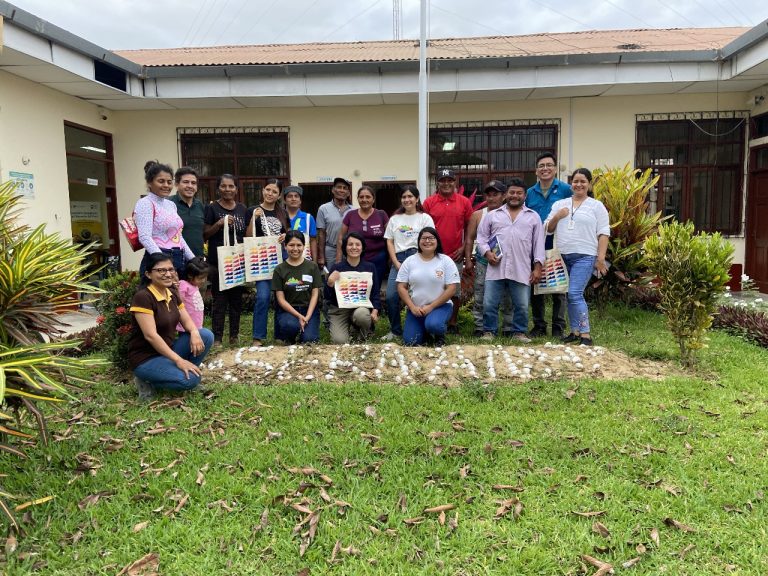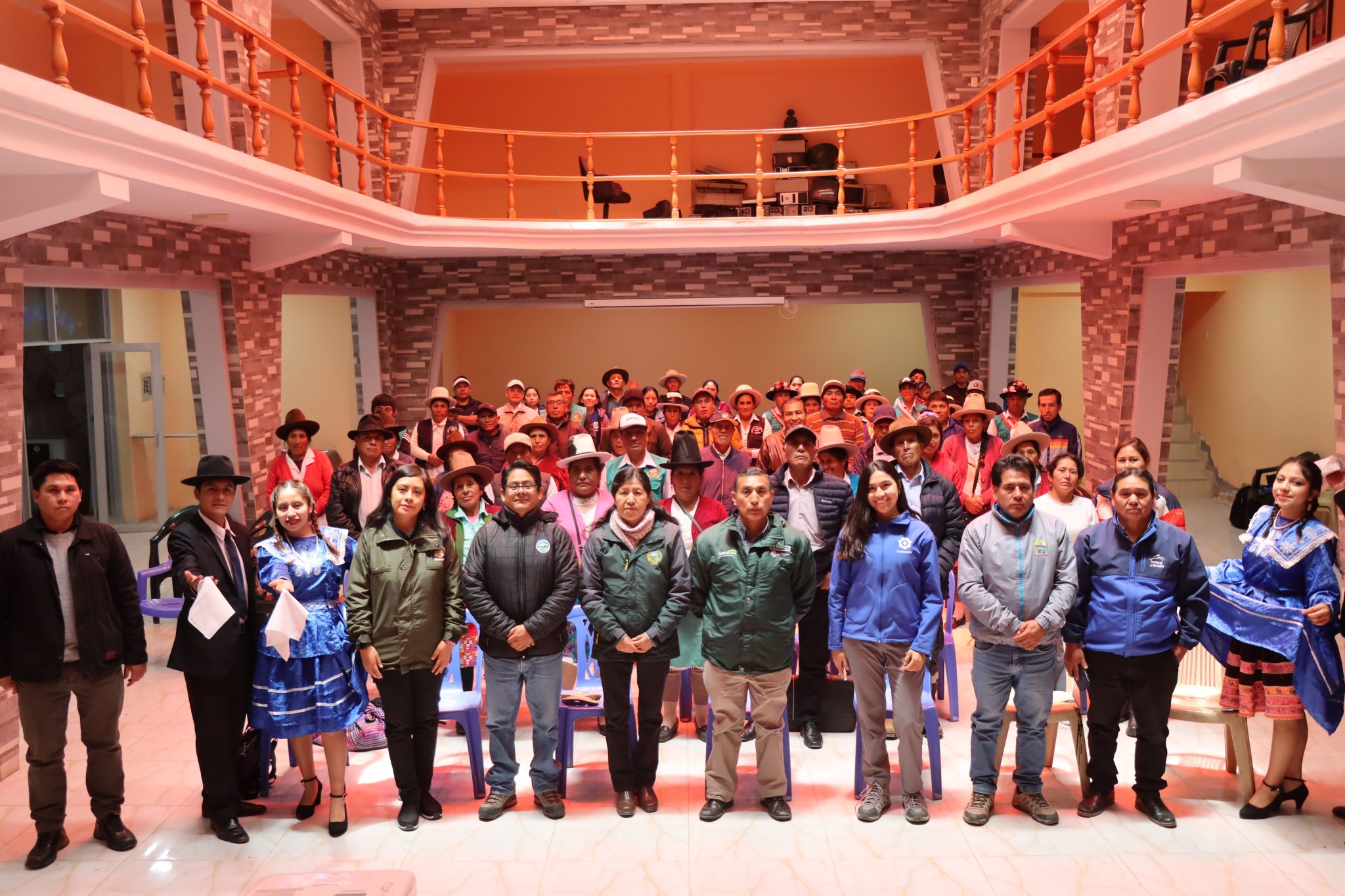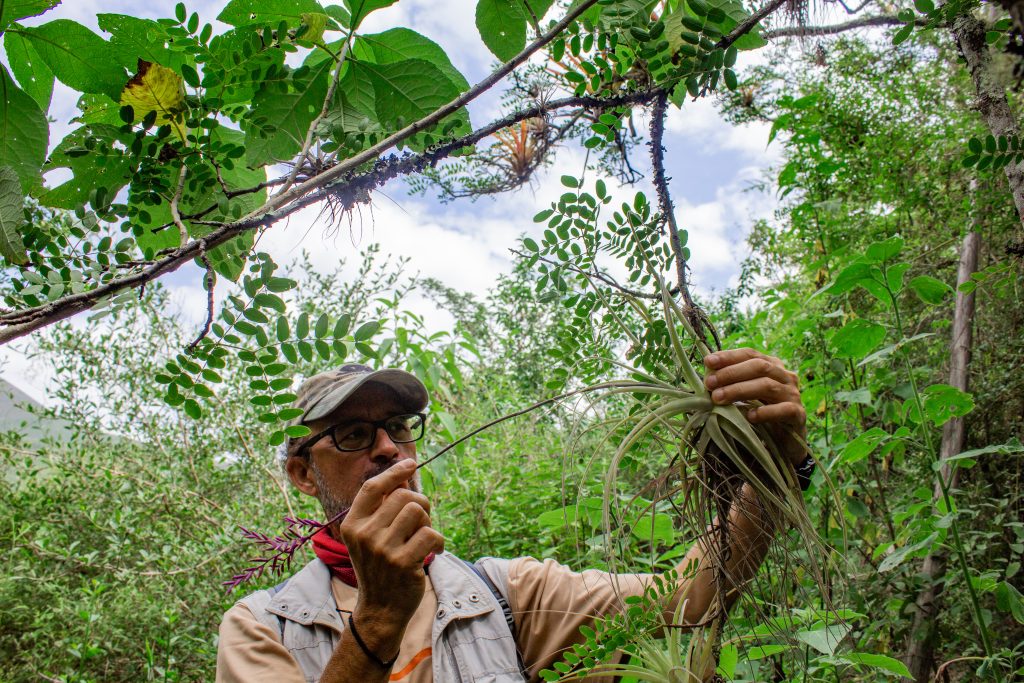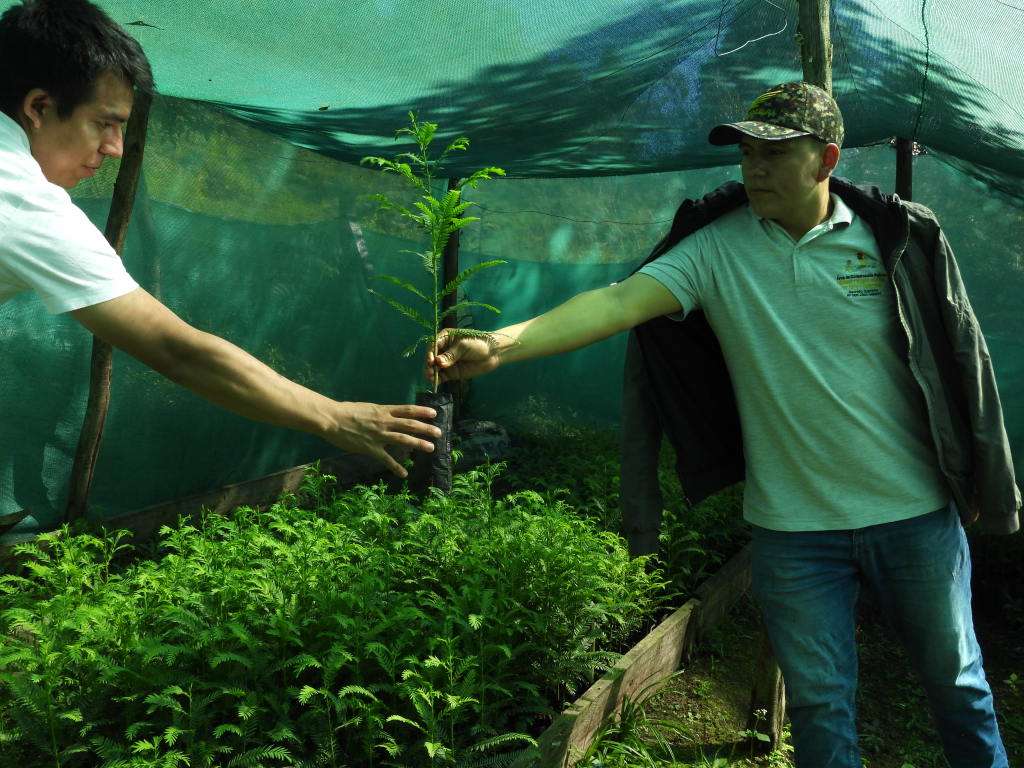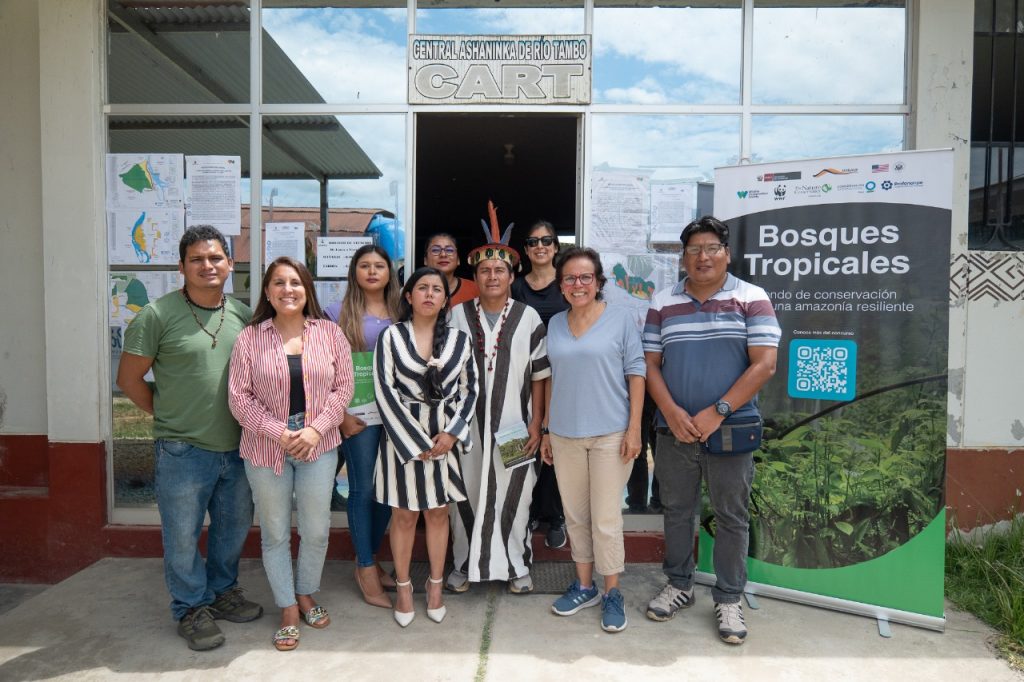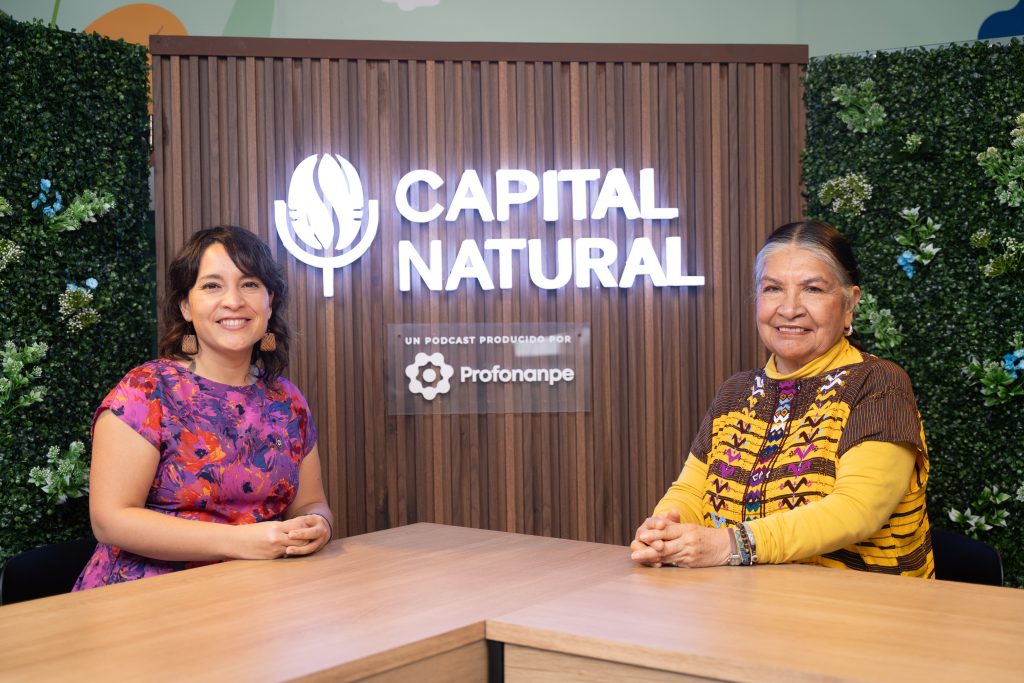End of the biological monitoring course at SERNANP-Tumbes facilities.
Photo: CONMANOPE
Initiative of the Consortium Mangroves of Northwestern Peru (Consorcio Manglares del Noroeste del Peru), led by the Regional Government of Tumbes within the framework of the Conserva Aves Project.
Associations that use the mangrove ecosystem and institutions linked to environmental governance and management in Tumbes participated in theoretical and practical workshops on conservation and sustainable ecosystem management. The training was provided in November 2024, with a view to consolidating the Los Tumpis Mangroves Regional Conservation Area (RCA).
The workshops are an initiative of the Consortium Mangroves of Northwestern Peru (CONMANOPE), led by the Regional Government of Tumbes as part of the Conserve Birds Project. Biologists Camila Dávila Rojas and Mónica Flores Molleapaza, from the Andean Ecosystems Association (ECOAN) were in charge of the sessions.
The mangrove ecosystem in Tumbes is an area of high biodiversity and a key habitat for numerous bird species, many of them migratory. In addition to their ecological value, these areas provide critical ecosystem services such as coastal protection, carbon sequestration, and livelihoods for local communities that depend on their resources.
However, such ecosystems face constant threats, such as deforestation, pollution and climate change. In this context, it is essential to offer this type of workshop, aimed at improving the capacities of local stakeholders and the governance of this territory.
Theoretical sessions in two days
The first of the training sessions was aimed at associations that use the mangrove ecosystem and focused on the importance of biological monitoring as a fundamental tool for land management. Participants learned about species identification, use of digital tools and techniques applied to conservation.
A day later, the second workshop addressed governance and territorial planning strategies, with emphasis on the importance of inter-institutional collaboration for mangrove conservation. Representatives of key institutions in environmental management participated in this space.
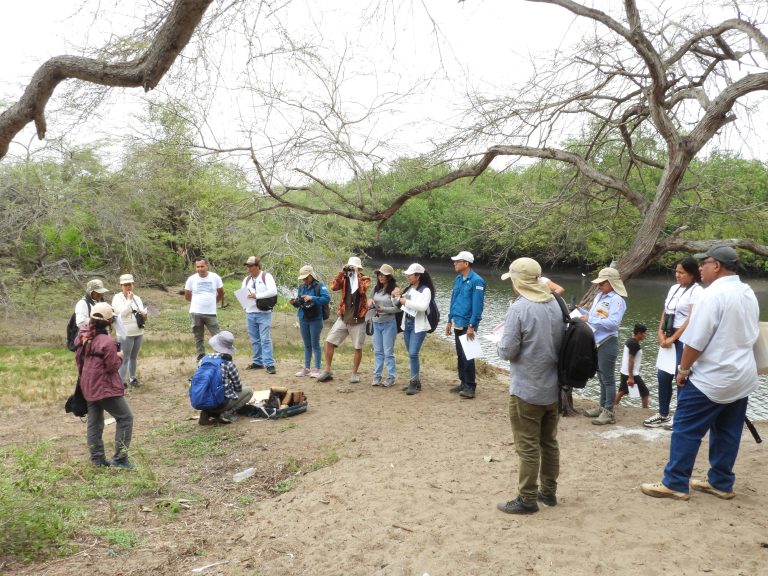
Practical biological monitoring course in Tumbes Mangroves National Sanctuary
Photo: CONMANOPE
This group was composed of the technical team of the Regional Management of Natural Resources and Environmental Management of GORE Tumbes, the Forestry and Wildlife Directorate of Tumbes, local municipalities, as well as teachers and students from the National University of Tumbes.
Practical session in a protected area
Two days later, on November 29, the participants of the previous sessions attended a practical workshop at Tumbes Mangroves National Sanctuary. This allowed them to apply the theoretical knowledge previously acquired in the field.
At the site, participants carried out monitoring exercises using tools such as GPS, binoculars and mobile applications to record birds and evaluate the ecosystem. They were able to identify key mangrove species and record observation data, which strengthened their ability to contribute to the environmental monitoring of the protected area.
The day allowed attendees to better understand the dynamics of the mangrove ecosystem and the importance of its conservation. It also encouraged the exchange of experiences and teamwork between local associations, technicians and academics, for the benefit of a cooperative and effective management of the Los Tumpis Mangroves RCA.
A step forward in the consolidation of the RCA
These efforts are part of a comprehensive process that seeks to consolidate the Los Tumpis Mangroves RCA, in addition to ensuring its official recognition and sustainable management. Consolidating the RCA is key to guaranteeing the long-term protection of this ecosystem, as it provides a legal and institutional framework for its sustainable management.
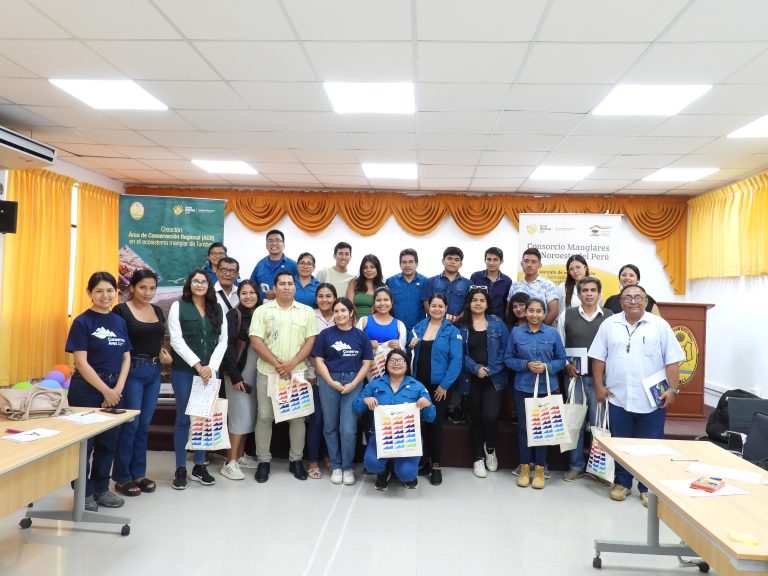
End of the governance and biological monitoring course at the Regional Government of Tumbes.
Photo: CONMANOPE
This process promotes local development, fostering economic opportunities based on the responsible use of natural resources. To continue along this path, it is essential to continue training key stakeholders, strengthen strategic alliances and manage the necessary financing for RCA implementation.
In this regard, providing opportunities for training and dialogue strengthens the involvement of these stakeholders and contributes to the effective management of the ecosystem, which ensures benefits for both biodiversity and the communities that depend on the mangroves.
Opting for a workshop strategy with practical implementation allows participants to acquire applicable knowledge and strengthen their role in ecosystem management. The combination of theory and practice facilitates the appropriation of knowledge and improves decision-making capacities in the territory.
When communities and local stakeholders are empowered with technical knowledge and management tools, they become the main allies of conservation. In turn, this ensures that ecosystem management is participatory, effective and adaptive to current environmental challenges.
Capacity building is essential to ensure the sustainability of the RCA!
Contact
Henrry Preciado Chune
Responsible for the Conserva Aves project at CONMANOPE
hpreciado@consorciomanglares.pe


